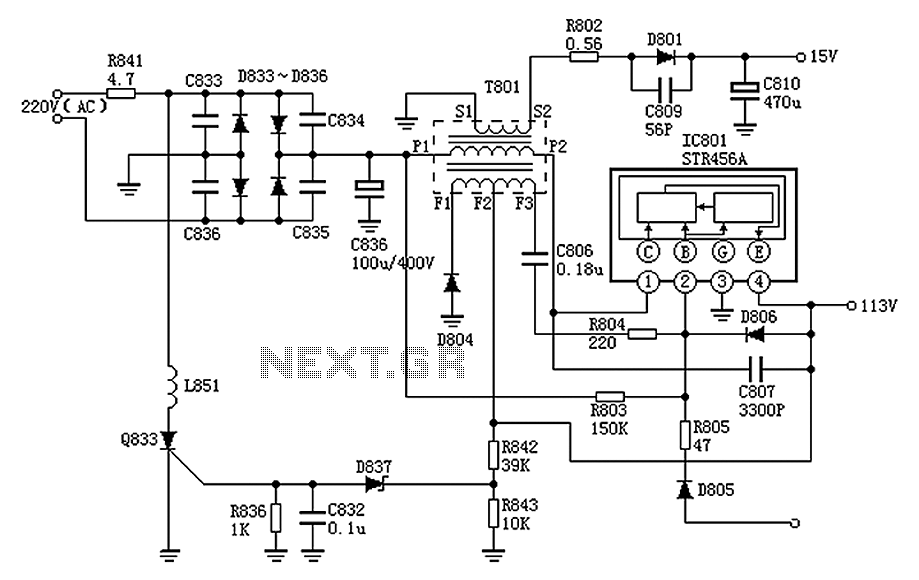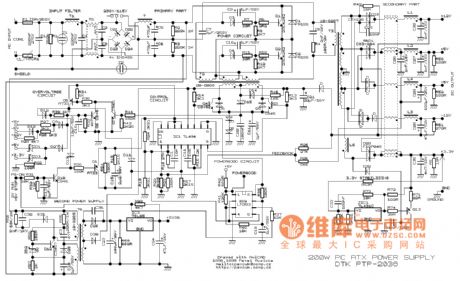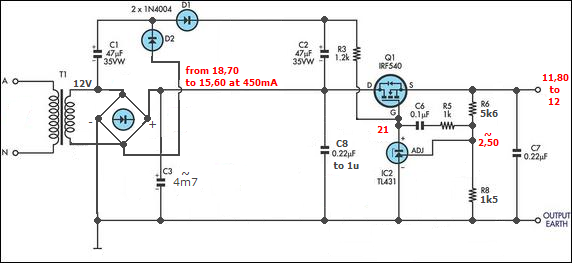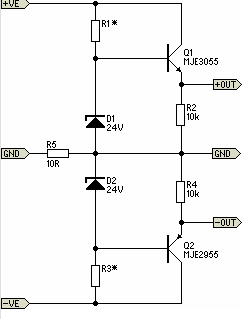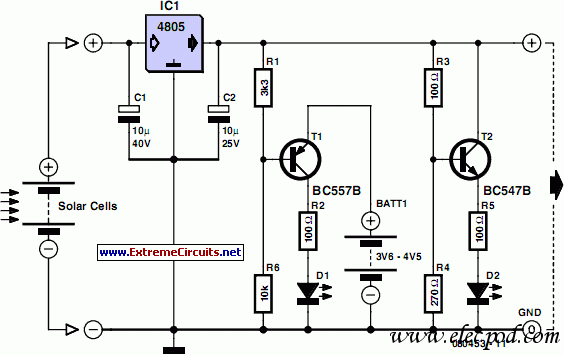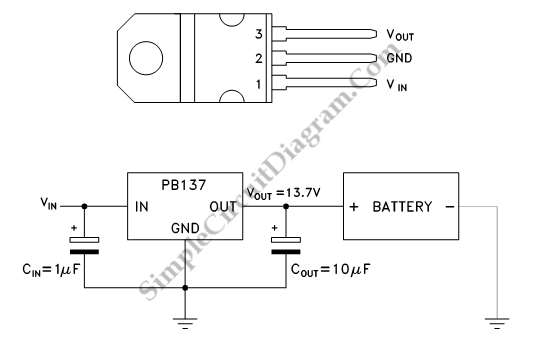
Switching regulator operating at 200Khz
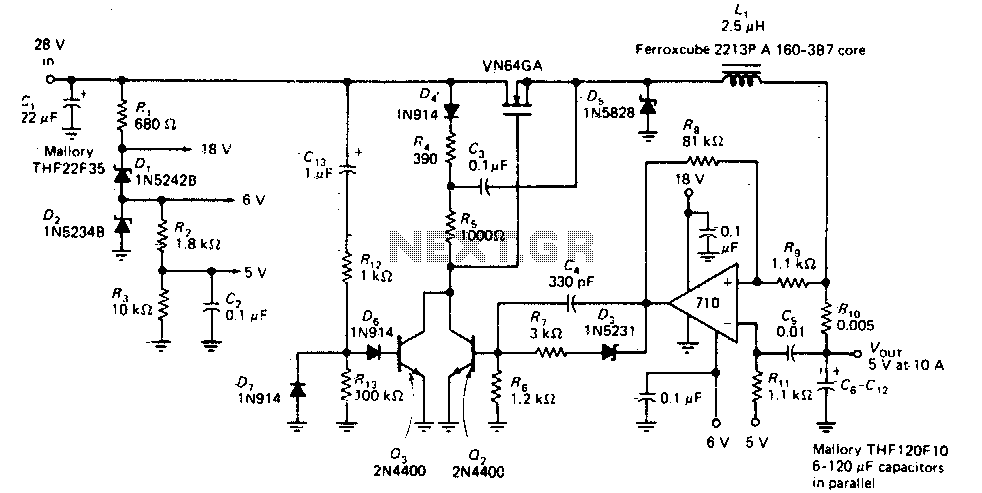
This circuit provides a regulated DC output with less than 100 mV of ripple for microprocessor applications. The required operating voltages are derived from a bleeder resistor network connected across the unregulated 28 V supply. The output of the LM710 comparator, which functions as an oscillator operating at 200 kHz, is sent through a level-shifting circuit to the base of bipolar transistor Q2. This transistor is part of a bootstrap circuit essential for fully activating the power MOSFET in totem-pole MOSFET arrays.
The circuit operates by utilizing a bleeder resistor network to extract the necessary voltages from an unregulated 28 V power supply. This configuration ensures that the microprocessor receives stable voltage levels, which are critical for reliable operation. The LM710 comparator serves as a key component in this design, functioning as an oscillator that generates a 200 kHz signal. This high-frequency output is crucial for maintaining the desired ripple voltage below 100 mV, which is essential for sensitive microprocessor applications.
The output from the LM710 is processed through a level-shifting circuit, which adjusts the signal to appropriate levels suitable for driving the base of the bipolar transistor Q2. This transistor plays a pivotal role in the circuit by acting as a switch that controls the operation of the power MOSFETs in the totem-pole configuration. The bootstrap circuit, of which Q2 is a part, is designed to ensure that the power MOSFETs are driven into a fully on state, allowing for efficient power delivery and minimizing losses in the circuit.
In summary, this circuit is intricately designed to provide a stable and regulated DC output with minimal ripple, ensuring that microprocessor applications receive the necessary voltage levels for optimal performance. The integration of the LM710 comparator, level-shifting circuit, and bootstrap configuration with bipolar transistor Q2 exemplifies a well-thought-out approach to power management in electronic systems.This circuit provides a regulated dc with less than 100 mV of ripple for microprocessor applications. Necessary operating voltages are taken from the bleeder resistor network connected across the unregulated 28 V supply.
The output of the LM710 comparator (actually an oscillator running at 200 kHz) is fed through a leveNshifting circuit to the base of bipolar transistor Q2 This transistor is part of a bootstrap circuit necessary to turn the power MOSFET full on in totem-pole MOSFET arrays.
The circuit operates by utilizing a bleeder resistor network to extract the necessary voltages from an unregulated 28 V power supply. This configuration ensures that the microprocessor receives stable voltage levels, which are critical for reliable operation. The LM710 comparator serves as a key component in this design, functioning as an oscillator that generates a 200 kHz signal. This high-frequency output is crucial for maintaining the desired ripple voltage below 100 mV, which is essential for sensitive microprocessor applications.
The output from the LM710 is processed through a level-shifting circuit, which adjusts the signal to appropriate levels suitable for driving the base of the bipolar transistor Q2. This transistor plays a pivotal role in the circuit by acting as a switch that controls the operation of the power MOSFETs in the totem-pole configuration. The bootstrap circuit, of which Q2 is a part, is designed to ensure that the power MOSFETs are driven into a fully on state, allowing for efficient power delivery and minimizing losses in the circuit.
In summary, this circuit is intricately designed to provide a stable and regulated DC output with minimal ripple, ensuring that microprocessor applications receive the necessary voltage levels for optimal performance. The integration of the LM710 comparator, level-shifting circuit, and bootstrap configuration with bipolar transistor Q2 exemplifies a well-thought-out approach to power management in electronic systems.This circuit provides a regulated dc with less than 100 mV of ripple for microprocessor applications. Necessary operating voltages are taken from the bleeder resistor network connected across the unregulated 28 V supply.
The output of the LM710 comparator (actually an oscillator running at 200 kHz) is fed through a leveNshifting circuit to the base of bipolar transistor Q2 This transistor is part of a bootstrap circuit necessary to turn the power MOSFET full on in totem-pole MOSFET arrays.
